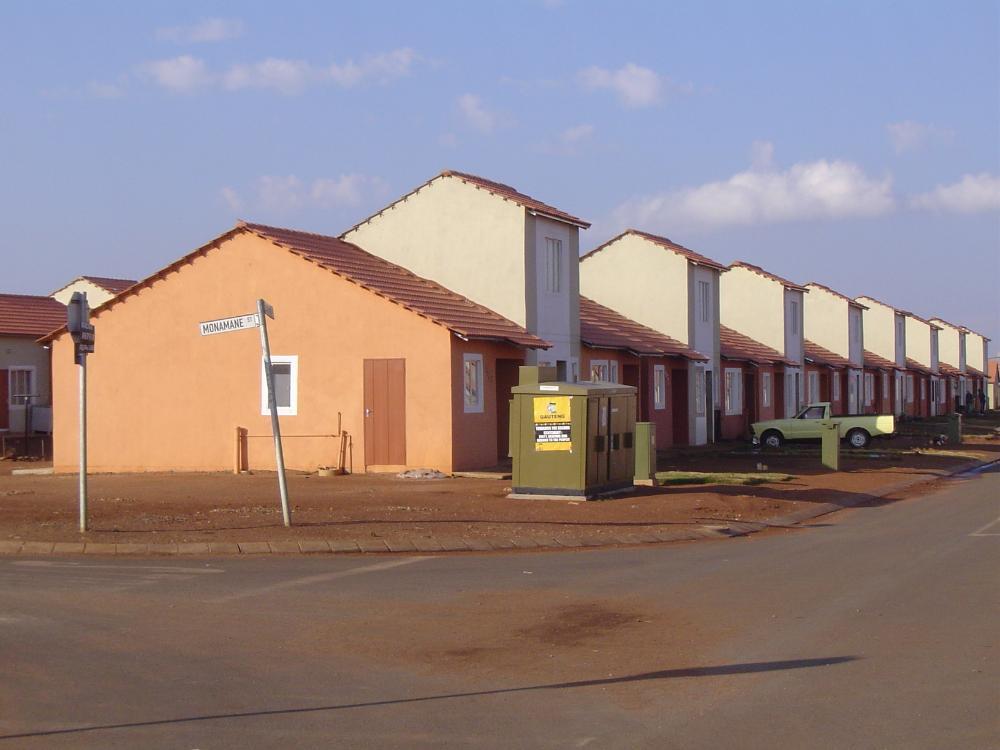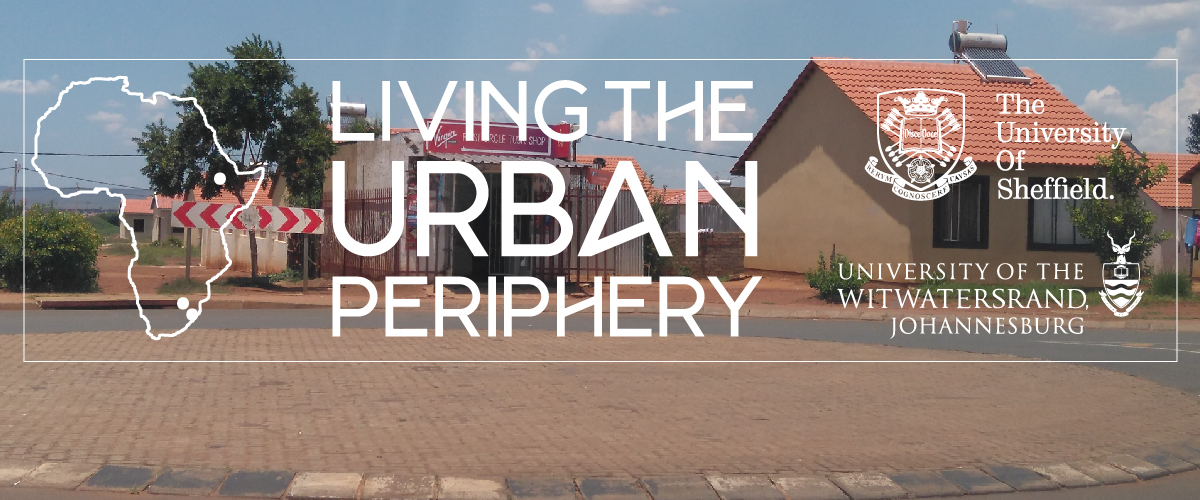
-
At the city edge: Situating peripheries research in South Africa and Ethiopia
in African cities and collaborative futures
Paula Meth, Alison Todes, Sarah Charlton, Tatenda Mukwedeya, Jennifer Houghton, Tom Goodfellow, Metadel Sileshi Belihu, Zhengli Huang, Divine Mawuli Asafo, Sibongile Buthelezi, and Fikile Masikane
This chapter explores how transformation in the spatial peripheries of three African city regions is shaped, governed and experienced, drawing on the findings of a three-year Economic and Social Research Council/National Research Foundation (ESRC/NRF) funded research project in South Africa and Ethiopia. We discuss both intellectual and methodological challenges, along with reflective insights of undertaking research on the dynamics and drivers of change and the ‘lived experiences’ of residents living on the peripheries of cities, using a mixed methods approach.
The chapter emphasises practices of collaborative research and reflects on our conceptualisations of terms such as ‘periphery’ and ‘drivers of change’. It then turns to question the process of knowledge production, examining what or whose lived experiences are captured or can be known. In doing so it briefly points to some initial findings of the project, but its aim is not to address these findings substantively, rather to explore the conceptual and practical challenges of undertaking research in African city peripheries. This exploration is extended through a reflection on various methodological issues, including issues of comparability and managing differentials in data depth and coverage. It concludes by highlighting the richness of researching the peripheries and the wider impacts of the work for both academic agendas and policy contexts.
Introducing mixed methods in urban peripheries research
The key research questions of the project were as follows:
- What are the main characteristics of economic transformation and infrastructural change?
- Who has driven these changes, and what is their significance for inclusive urban development?
- What governance mechanisms shape these infrastructural and economic changes?
- How are these urban changes experienced by different residents of urban peripheries?
- What are the comparative lived experiences in urban peripheries?
- What are the implications of such drivers and experiences of urban change for reducing urban poverty and improving urban inclusion?
-
Poverty, subsidized housing and Lufhereng as a prototype megaproject in Gauteng
Poverty, subsidized housing and Lufhereng as a prototype megaproject in Gauteng
Sarah Charlton
Projected to accommodate at least 22,500 households by 2023, Lufhereng is called the City of Johannesburg’s biggest integrated development. Emphasising both mixed income housing and economic activity, the Provincial authority considers Lufhereng ‘a blue-print’, showcasing ‘exactly the type of ground-breaking project that Gauteng Province needs to lead sustainable economic growth and ensure future prosperity’. Located on the western edge of Soweto the development is argued by provincial planners to be a natural extension of the township originating under segregationist South Africa, yet from a City perspective it has been an outlying locale of low development priority. To counter its spatial disconnect from significant employment nodes the Province and the City propose inter alia both subsistence farming and commercial agriculture to ‘become an economic catalyst for the region’. A significant proportion of Lufhereng’s population will be at the very bottom of the income spectrum in fully state subsidized houses. Drawing on studies of lived experiences of subsidized housing in South Africa this paper shows the relevance for mega projects of the concepts of ‘invented co-production’ and ‘incubator urbanism’. Invented co-production refers to residents’ unplanned modifications of their built environment or reshaping of their household, evident in other low income housing interactions and likely to emerge in mega projects despite their highly planned and controlled ambitions. Incubator urbanism re-centres attention on the importance of underlying infrastructure to poor households despite locational and economic disconnects. These two concepts, apparent in Lufhereng, both challenge yet also feed into the conceptualizations of forthcoming mega-projects.
-
Satellite settlement on the spatial periphery: lessons from international and Gauteng experience
Satellite settlement on the spatial periphery: lessons from international and Gauteng experience
Philip Harrison and Alison Todes
Gauteng Province’s proposal to create large new settlements mainly on the spatial periphery of the city-region is intended both to address the inefficiencies of scattered small-scale developments and to respond to economic decline outside the urban core. An ambition to create self-sufficient satellite towns or cities is, of course, not new. In this paper we assess experience internationally and in South Africa, exploring the extent to which sustainable economies have been created in satellite settlements. Internationally, there is a mixed story. There are instances of success but many more cases of failure, or of initial success with later decline. The frequent consequence of a well-intentioned satellite development internationally is extensive commuting. In Gauteng there is a long history of state- and private-sector led satellite town development. This has included the initial expansion of the mining sector; the later development of towns focused on heavy industry; and the displaced urban settlements around the apartheid-era industrial decentralisation points. While there was success in building economies for periods of time, the developments have proven vulnerable to changing global conditions, shifts in policy, and new local dynamics. In recent years, the Gauteng periphery has declined relative to the core, leaving large numbers of people in poverty traps or dependent on commuting. International and Gauteng experiences offer a sobering lesson for present day attempts to create large new settlements on the spatial periphery where economic prospects are, at best, highly uncertain.
-
Shaping peripheral growth? Strategic spatial planning in a South African city-region
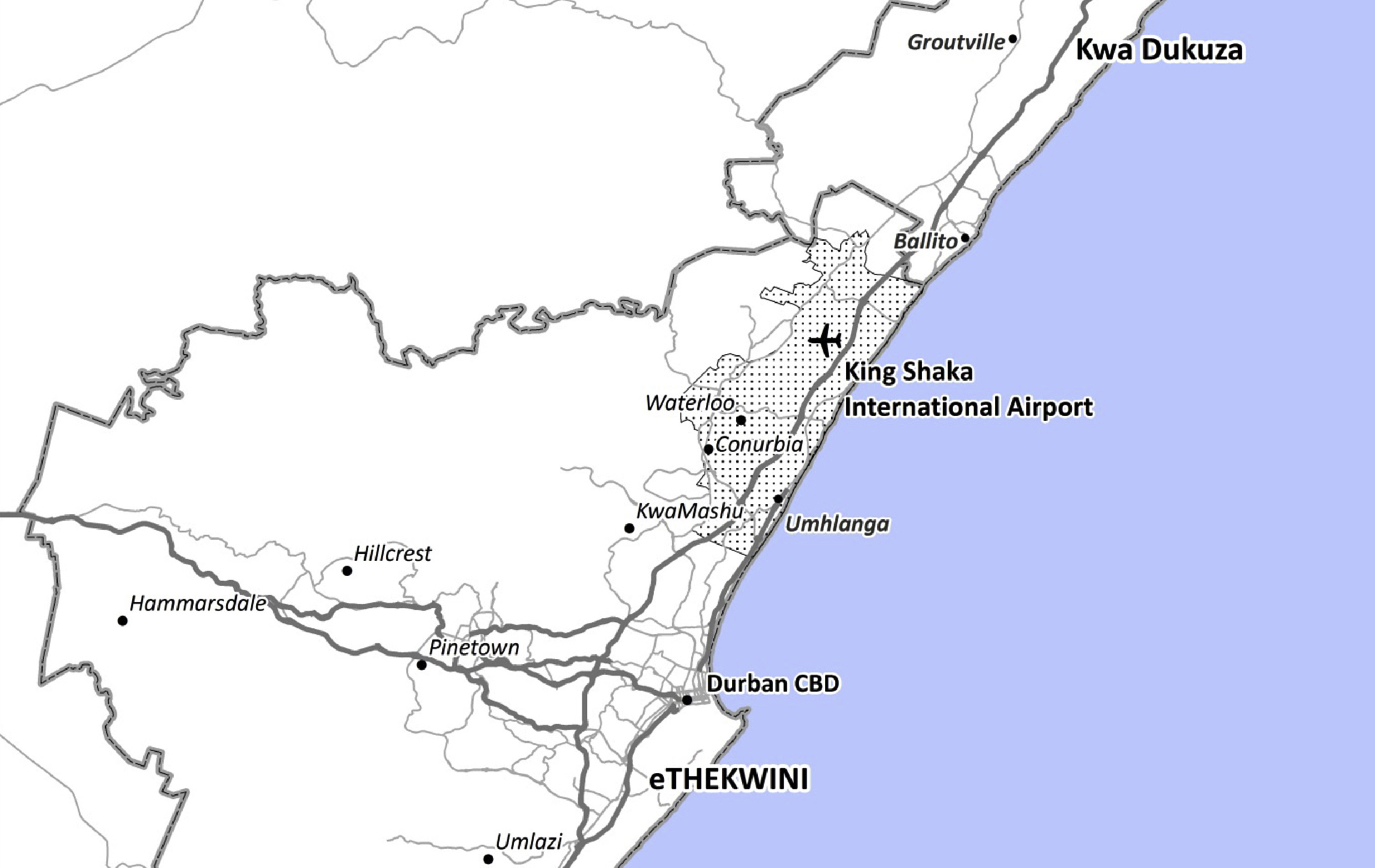
Shaping peripheral growth? Strategic spatial planning in a South African city-region
Alison Todes
There has been a widespread critique of the relevance of traditional forms of spatial planning for African cities, and a search for alternative approaches, including strategic spatial planning. However there are debates over whether it is effective and appropriate. This paper explores how strategic spatial planning has influenced growth on the urban periphery of one South African city-region: the northern corridor of the eThekwini (Durban) metropolitan municipality, and the adjacent KwaDukuza municipality. Forms of strategic spatial planning have been underway there for close to 30 years, enabling a relatively long-term view of its influence. In contrast to assumptions that planning is able to direct growth in ways assumed by master planning, or that it is entirely ineffective, the paper shows the complex and varying ways in which planning has shaped growth, intersecting with other drivers of development, and processes of change.
View the full paper.
-
New housing/new crime?
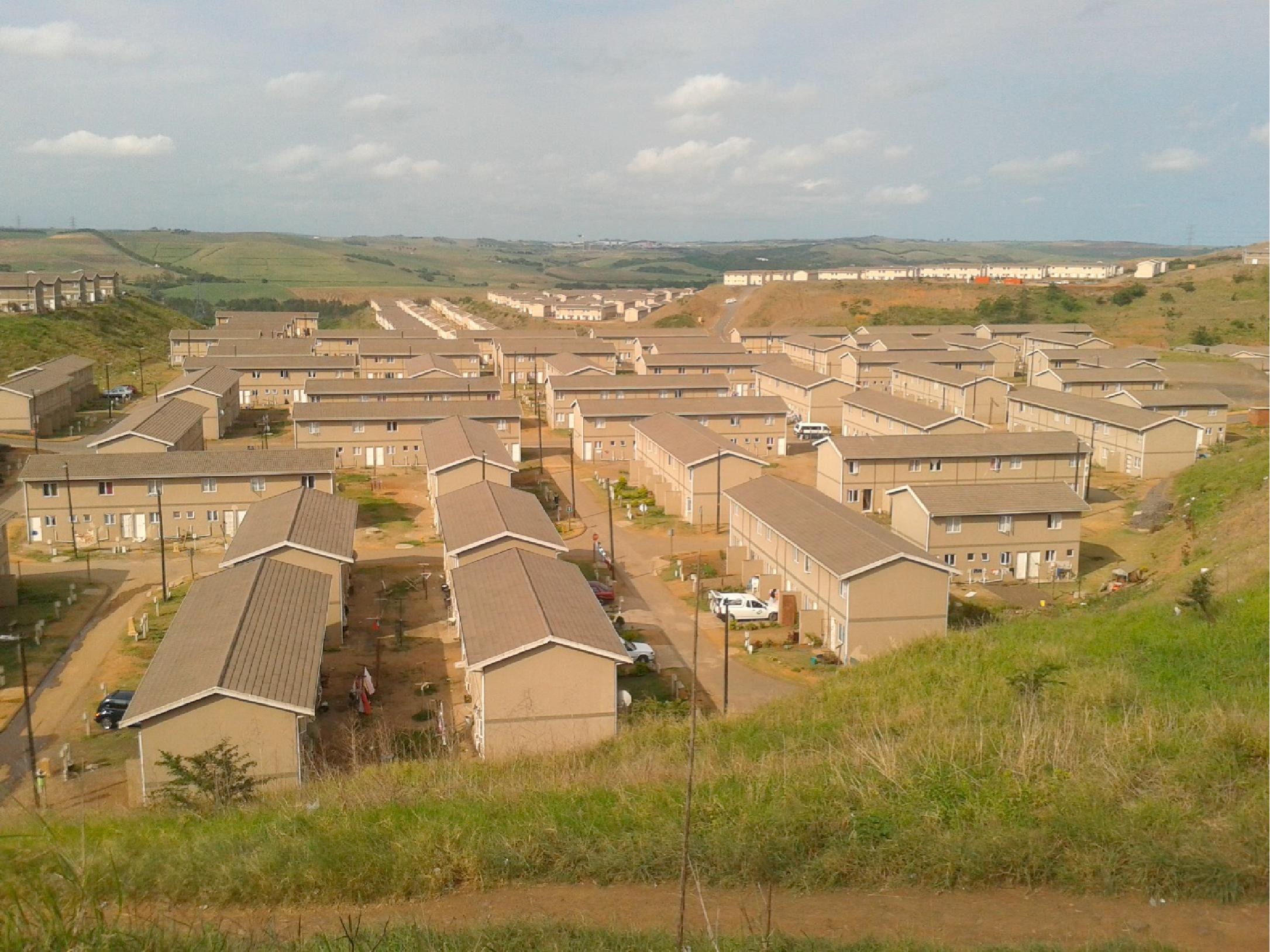
New housing/new crime? Changes in safety, governance and everyday incivilities for residents relocated from informal to formal housing at Hammond’s Farm, eThekwini
Paula Meth and Sibongile Buthelezi
New state-subsidised ‘RDP’ housing in South Africa aims to provide former informally-housed residents with a better quality of life, stronger community and decreased levels of crime. Despite the state’s ambitions, this process is highly contradictory, increases in safety occurring alongside rising incivilities and tensions. This paper contributes to an emerging set of debates on the socio-political outcomes of state-led housing interventions in the global South, through an illustration of the limitations of efforts to produce ‘safe neighbourhoods’ in contexts of high unemployment alongside high levels of violence. The conceptual framing of ‘Southern Criminology’ (Carrington et al., 2015), centres the significance of histories of colonial and post-colonial violence, inequality, hybrid governance and justice practices, as well as informal living, and is employed to analyse recently housed residents’ experiences of crime and safety in South Africa, in a north eThekwini settlement, Hammond’s Farm. Recognising these ‘Southern’ factors, the paper argues that movement into new formal housing, is typified by significant material changes at the home and neighbourhood scale which foster privacy and safety, formalised governance practices and (partial) improvements in policing services. These occur in conjunction with access to new leisure activities including alcohol consumption and ‘township life’ which alongside ongoing poverty foster urban incivilities. A ‘Southern Criminology’ perspective frames concluding questions about the nature of crime in contexts of urban change, which are persistently shaped by inequality and wider historical and structural factors, challenging the state’s aspirations to achieve crime reduction through housing.
Download the full paper: New housing/new crime?
-
Uneven Spaces: Core and Periphery in the Gauteng City-Region
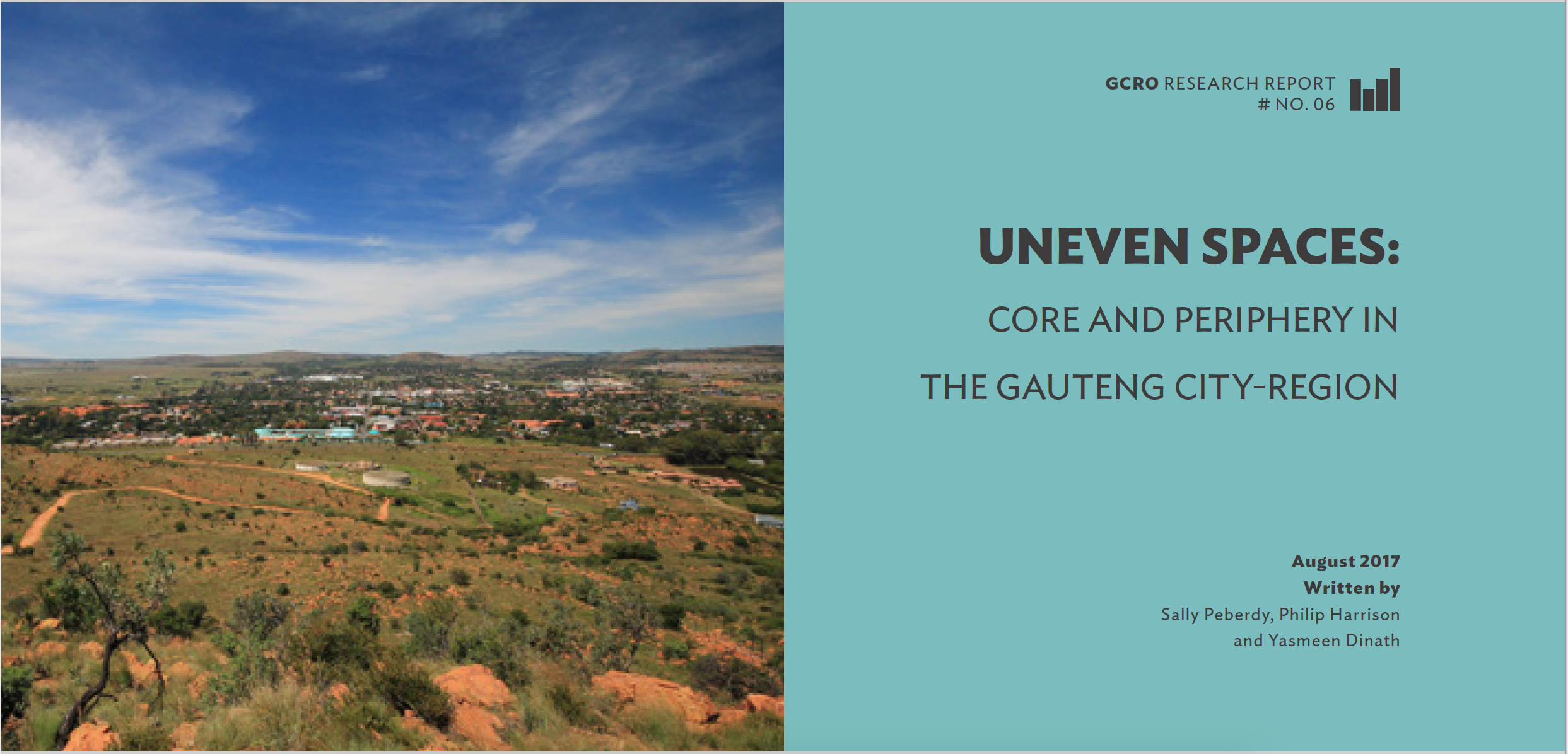
Uneven Spaces: Core and Periphery in the Gauteng City-Region
Sally Peberdy, Philip Harrison and Yasmeen Dinath
Peripheral areas of the Gauteng City-Region – like small towns on the edge, large peri-urban and commercial farming areas, sprawling dormitory townships, huge swathes of displaced urbanisation in ex-Bantustans, and remote industrial and mining areas – are all poorly understood. Yet there is evidence that many of these areas are undergoing rapid change, with profound implications for many current policy debates including what to do about inequitable economic growth patterns, how to manage ongoing population movements in the post-apartheid period, where best to locate large public housing schemes, and so on.
Uneven spaces: Core and periphery in the Gauteng City-Region, GCRO’s sixth research report, comes from a clear recognition that despite the comparative wealth of Gauteng and its role in driving the national economy there are places of relative ‘peripherality’ in the GCR that require attention. The report is also a response to a strong focus in the existing literature on the physical and economic core of the province, the City of Johannesburg in particular. By contrast there is a relative paucity of analysis on less central parts of the city-region.
The work is the result of a research partnership between the GCRO and the South African Research Chair in Spatial Analysis and City Planning (SA&CP), in the School of Architecture and Planning at Wits University. GCRO’s Dr Sally Peberdy wrote the first part of the report entitled ‘Uneven development – core and periphery in Gauteng’. Prof Philip Harrison and Yasmeen Dinath from SA&CP compiled the second part, ‘Gauteng – on the edge’. Both parts, albeit through different modes, consider transitions in the social- and space-economies of outlying places.
The first part investigates the dynamics of peripheral areas in Gauteng through the lens of theories of uneven development. Showcasing a wealth of data and maps generated from the Census and GCRO’s own Quality of Life surveys, it analyses the multiple ways that spaces may be peripheral. These include unequal access to housing and services; the spread of income, household assets and employment opportunities; variations in perceived quality of life; and so on. The analysis builds from an initial binary delineation of parts of Gauteng as either ‘core’ or ‘periphery. It then progressively nuances our understanding by showing that notions of core and periphery are relational, that processes of change across what may be counted as core or periphery are often indeterminate and contradictory, and that there are often ‘peripheral’ areas in the heart of the GCR, and ‘core’ features in areas conventionally regarded as on the margin. This section concludes with thoughts on the role of government in creating, sustaining and ameliorating multiple forms of peripherality,
The second part of the report asks the question ‘what is happening along the geographic edge of the GCR?’, and seeks to answer this both through the lens of scholarship on edge cities, peri-metropolitan areas, and agglomeration, as well as through a number of in-depth case studies in six types of peripheral areas:
1. Areas with extractive economies (Carletonville);
2. Industrialising ex-mining areas (Nigel-Heidelberg);
3. Areas with state-implanted industry (The Vaal, including Vereeniging, Vanderbijlpark and Sasolburg);
4. Decentralised growth points (Babelegi);
5. Agricultural service centres (Bronkhorstspruit); and
6. Recreational hubs (Hartbeespoort).Through its exhaustive narrative accounts of the development of specific places on the edge of the GCR, this section of the report compellingly highlights the importance of history and timing, and asks us to consider how urban development drives economic development and vice versa.
Although ‘core’ and ‘periphery’ are artificial constructs, these terms gesture at very real spaces of uneven growth and development. The two parts of this report, different but complementary, considerably deepen our understanding of what is going on in parts of the city-region that are less well researched, and help focus the attention of policy-makers concerned with the causes and effects of – as well as possible solutions to – spatially uneven development outcomes.


